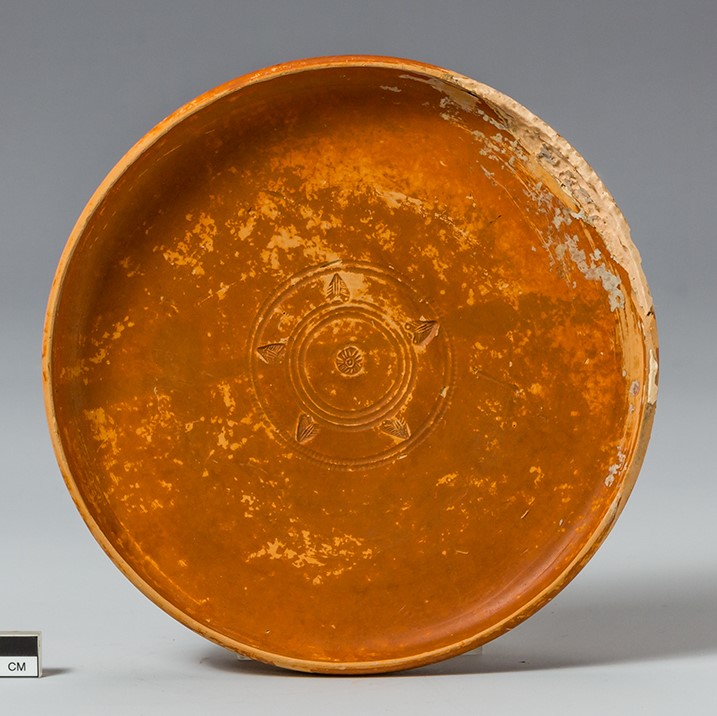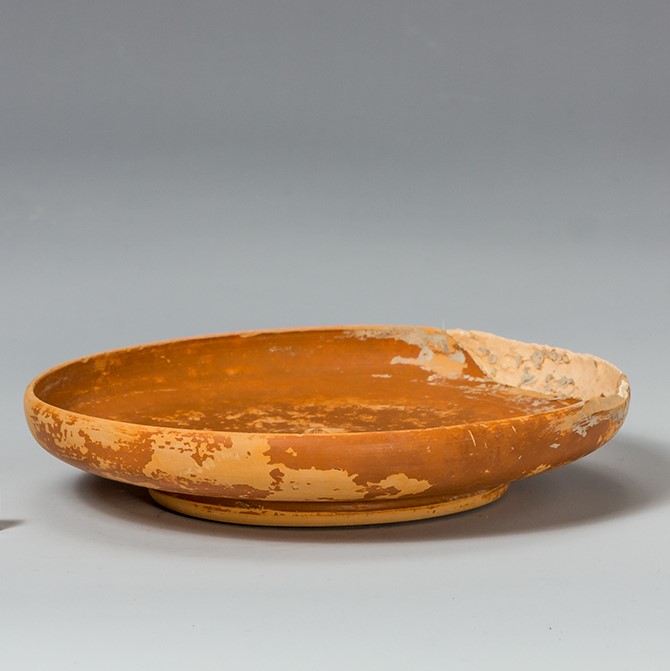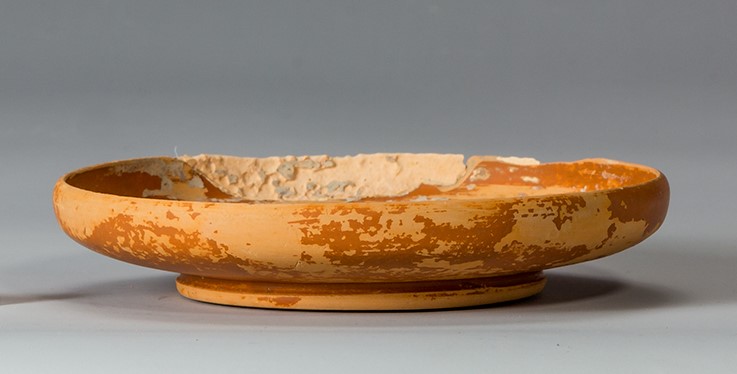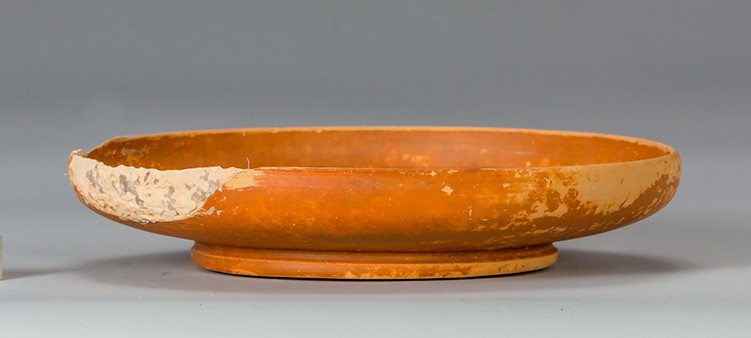Acquisition number: 2012.03
Intact, in fair condition; patches of wear, erosion to one side. Small redware serving dish with central circular stamp surrounded by three concentric rings, five radiating leaf motifs and two concentric rings of fine rouletting. Up-turned rim, wide ring base. Red slip.
Title: Small Hellenistic Redware Serving Dish - 2012.03
Acquisition number: 2012.03
Author or editor: Ruth Mcconnell
Culture or period: Hellenistic
Date: c. 3rd - 2nd century BC
Material: Clay - Terracotta
Object type: Vessels - Dish/plate
Dimensions: 145mm (w) × 30mm (h)
Origin region or location: Syria
Display case or on loan: 4
Keywords: Hellenistic, Redware, Pottery
H. Jackson, “The Common Wares from the Housing Insula”, in: H. Jackson and J. Tidmarsh, Jebel Khalid on the Euphrates, vol. 3 - The Pottery (Sydney, 2011) 1-261.
S. Rotroff, The Athenian Agora, vol. 29 - Athenian and Imported Wheelmade Table Ware and Related Material (Princeton, 1997).
S. Weinberg, “Tel Anafa: The Hellenistic Town”, Israel Exploration Journal 21, 1971, 86-109.
2012.03
Small Hellenistic Redware Serving Dish
Purchased in Syria and on loan from Emeritus Professor Graeme Clarke
Diameter 14.5cm; height 3cm
Intact, in fair condition; patches of wear, erosion to one side. Small redware serving dish with central circular stamp surrounded by three concentric rings, five radiating leaf motifs and two concentric rings of fine rouletting. Up-turned rim, wide ring base. Red slip.
Distinctive plates with an up-turned rim similar to the present dish were unearthed at excavations at Jebel Khalid in north Syria. Although these plates, classified as Type 14, are mostly of a larger diameter than the present item, one dish of similarly small dimensions was found. Numerous small dishes more in line with the diameter of the present plate, and classified as ‘saucers’, were discovered at Jebel Khalid, but these have a distinguishing flaring rim. Differing shapes probably reflect use with different food types, and saucers perhaps held additional functions as lids for jars or for holding offerings of oil at graves (H. Jackson, “The Common Wares from the Housing Insula”, in: H. Jackson and J. Tidmarsh, Jebel Khalid on the Euphrates, vol. 3 (Sydney, 2011) 25 and 36-37).
As inexpensive common ware, small plates could be manufactured quickly and imperfectly. Dishes of the lowest quality, however, generally lack decoration (S. Rotroff, The Athenian Agora, vol. 29 (Princeton, 1997) 149). The stamped motifs and red slip on the present dish signal that more care was taken in production. H. Jackson notes that, at the Jebel Khalid settlement, locally made tableware intended for everyday use was often not of inferior manufacture (“The Common Wares from the Housing Insula'', 1).
Parallels for the decorative composition on the present dish can be found on items discovered at Jebel Khalid (see H. Jackson, “The Common Wares from the Housing Insula”, 38-40 and col. pl. III). For locally made redware plates found at another eastern Hellenistic site that display similar shapes and decoration to the present dish, see S. Weinberg, "Tel Anafa: The Hellenistic Town", Israel Exploration Journal 21, 1971, 102 and pl. 15.
On loan from Emeritus Professor Graeme Clarke (received 9 March 2012)



